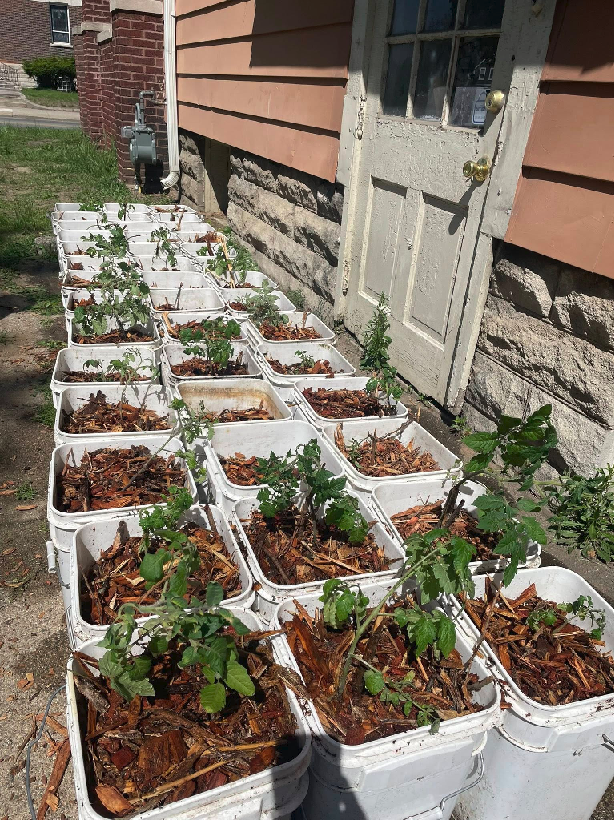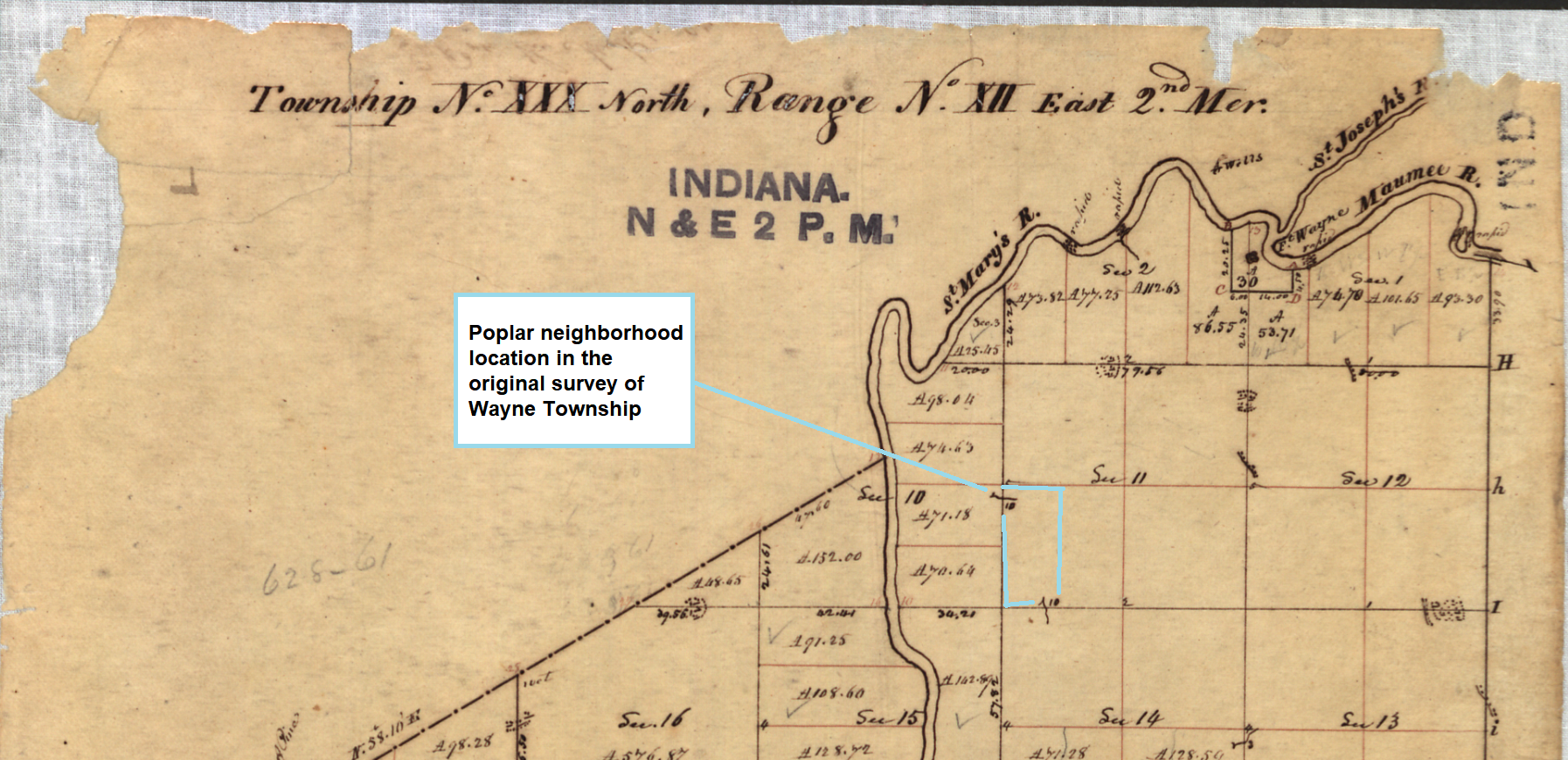Treaty of Greenville 1795, aka ''Treaty with the Wyandot, Etc. 1795''
Treaty of Greenville Page 1
Treaty of Greenville Page 2
Treaty of Greenville Page 3
Treaty of Greenville Page 4
Treaty of Greenville Page 5
Treaty of Greenville Page 6
Treaty of Greenville Page 7

Wayne Township, roughly six miles square, is described in the Treaty of Greenville of 1795
as one of the areas the First Nations were forced to "cede to the United States" in their ongoing holocaust,
a genocidal project wrapped in an artificial narrative of peace as professed by some religious driven or influenced colonists such as the Quakers, or spelled out in treaty or law without delineating First Nation's sovereignty.
Rather, the peace that George Washington envisioned, having "given commands that Indian villages be burned, their lands occupied, and their women and children imprisoned.
In fact, he had become so reviled among the Iroquois that he - and all those who subsequently have held the office of the U.S. president -
became known in Iroquois as "Conotocarious," which translates as "Town Destroyer" or "Devourer of Villages."1
"The Ordinance of 1787 had promised both that Indians north of the Ohio would be treated justly and that the territory would be worked by free men, not slaves.
The ordinance had already taken a beating on both counts. By 1805, Governor Harrison and his like-minded legislature were ready to abuse it further still."2
Private reserves of land were cut out for dividing the Miami people between a landed gentry and ''wild Indians.'' Bribes, duress, debt traps and other forms of corruption disrupted the formation of a community of equals.
The United States divide and conquer strategy over the Myaamiaki, or Miami people, and other Indigenous people included cultural destruction, economic class and geographic separation, and treaty abuse for "extirpation".
The conquest was designed to solidify the United States, reconcile Euro-imperial settler-colonial competition, and lay the groundwork for successive steps in the taking of Myaamiaki homeland.
The white supremacists forced the free Indians from their hunting, fishing, farming and foraging land, while selectively and illegally paying premiums to leaders including slaves.
"...Harrison's efforts in 1805 were exemplified by his August 26 letter to the secretary of war. Regarding Chief Little Turtle of the Miamis,
the governor wrote Dearborn that "[I]n pursuance of the President's directions, I have promised the Turtle fifty dollars, per annum, in addition to his pension; and I have, also, directed Captain Wells to purchase a negro man for him in Kentucky..."3
The final solution against free Indians was to force them to leave Indiana, strip all first nations of Indiana of their collective ownership of land, and to "extinguish Indian titles in Indiana." The 1840 Treaty of the Wabash was a pivotal point for the ethnic cleansing of the Myaamia people from their homeland.
While the landed class could stay in Indiana, provided they played along on the corrupt terms of the settler-colonial ideology, they in fact, along with Blacks and women, were not free.
"...in the Treaty of 1838, Myaamia leaders agreed for the first time to consider a future Removal west.
As we look at the Treaty of 1840, we will see how that agreement to consider became an agreement to remove."4
(emphasis added)
The Treaty of 1838 "provided that if Removal occurred, 77-year-old Principal Chief Pinsiwa 'John B. Richardville' and his family
would continue to receive their share of the annuities at Fort Wayne, Indiana" [Note: In other words this family, which included Little Turtle's descendants, did not have to move]5
Those living freely around Fort Wayne such as on the land purchased by the granddaughter of Chief Little Turtle here in the Poplar Neighborhood,
were harassed, hunted and rounded up on canal boats for shipping out of Indiana.
Fortunately the racist plan to rid Indiana of the dispossessed Indians failed to find them all, and some simply walked back.
"Many of them had relatives who were not on the canal boats, Myaamiaki who were exempt from Removal or had fled.
Families were torn apart. A few on the boats, like Siipaakana 'Thomas Godfroy,' were exempt from Removal but could not bear to see their relatives being forced to leave,
and they were concerned for the safety of their loved ones.
Yet they too left family behind as the boats began to move eastward on the canal.
Everyone who was exempted had family and friends being removed.
Their hearts were breaking too, as they tearfully parted from their beloved friends and relatives."6
Those who took annunities had done so under duress. The granting of private land reserves and trading rights to a limited number of families was also provided by treaty under the duress of increasing force up to and including death. From the Myaamiaki position, the duress was existential with no effective deterence.
The best the Myaamiaki could negotiate at this point was to delay removal for the many and accept the token remuneration for the few who would survive in Indiana.
The Miami Nation of Indiana
Miami Indians of Indianaare today headquartered at a tribal complex in Miami County.
The Miami Nation of Oklahomahas attained a parcel of homeland in Allen County to continue their work for solidarity with the Indiana Myaamiaki, establishing national sovereignty, driving the case for reparations, and building true international peace.
The reconciliation of the Oklahoma and Indiana Miami nations is ongoing. The First Nations' struggle continues.
Today the Poplar Neighborhood welcomes the Myaamiaki and recognizes the important heritage and ongoing challenge of the First Nations, African-Americans and Women,
which intersects with originating land title for the Poplar Neighborhood where all people are welcome.
President Joe Biden selected Debra Haaland as the first Native American to serve in a Cabinet position in U.S. history.
She served as Secretary of the Interior, the office overseeing the Bureau of Indian Affairs.
In 1990 the BIA ruled against the Miami Nation of Indiana petition to be recognized by the federal government. The Indiana Miami tribe was illegally stripped of their recognition rights in 1898.
1The Rediscovery of America, Native Peoples and the Unmaking of U.S. History, By Ned Blackhawk, Yale University Press 2023, p. 200
2Mr. Jefferson's Hammer, William Henry Harrison and the Origins of American Indian Policy, By Robert M. Owens, University of Oklahoma Press 2007, p. 99
3Owens, Mr. Jefferson's Hammer, 99
4Removal - the Treaty of 1840, Posted by Diane Hunter, Tribal Historic Preservation Officer for the Miami Tribe of Oklahoma, May 7, 2021, https://aacimotaatiiyankwi.org/2021/05/07/removal-the-treaty-of-1840/
5Exemptions From Removal, Posted by Diane Hunter, Tribal Historic Preservation Officer for the Miami Tribe of Oklahoma, July 2, 2021, https://aacimotaatiiyankwi.org/2021/07/02/exemptions-from-removal/
6A Small Military Force, 1846, Posted by Diane Hunter, Tribal Historic Preservation Officer for the Miami Tribe of Oklahoma, September 3, 2021, https://aacimotaatiiyankwi.org/2021/09/03/a-small-military-force-1846/





 Robert A. Phillips, First President of Poplar Neighborhood Association
Robert A. Phillips, First President of Poplar Neighborhood Association
 Mike J. Bondar, Past President of Poplar Neighborhood Association
Mike J. Bondar, Past President of Poplar Neighborhood Association







 Ahpezzahquah purchased the land of the Poplar Neighborhood in 1824
Ahpezzahquah purchased the land of the Poplar Neighborhood in 1824

 The Poplar Neighborhood is a walkable place for your basic needs
The Poplar Neighborhood is a walkable place for your basic needs



 Vaccinations
Vaccinations Mosquito Disease Awareness!!!
Mosquito Disease Awareness!!!







 You may submit your neighborhood-related graphic, message or social media post for this cooperative neighborhood's opinion page, subject to social media community standards. We reserve the right to make minor changes for grammar, etc.
You may submit your neighborhood-related graphic, message or social media post for this cooperative neighborhood's opinion page, subject to social media community standards. We reserve the right to make minor changes for grammar, etc.
 Real Estate Abstract for Poplar Neighborhood
Real Estate Abstract for Poplar Neighborhood The Poplar Neighborhood is located in the 80 acres
The Poplar Neighborhood is located in the 80 acres North section of Poplar Neighborhood on 1898 Map
North section of Poplar Neighborhood on 1898 Map
 South section of Poplar Neighborhood on 1898 Map
South section of Poplar Neighborhood on 1898 Map
 Wayne Township, roughly six miles square, is described in the Treaty of Greenville of 1795
Wayne Township, roughly six miles square, is described in the Treaty of Greenville of 1795